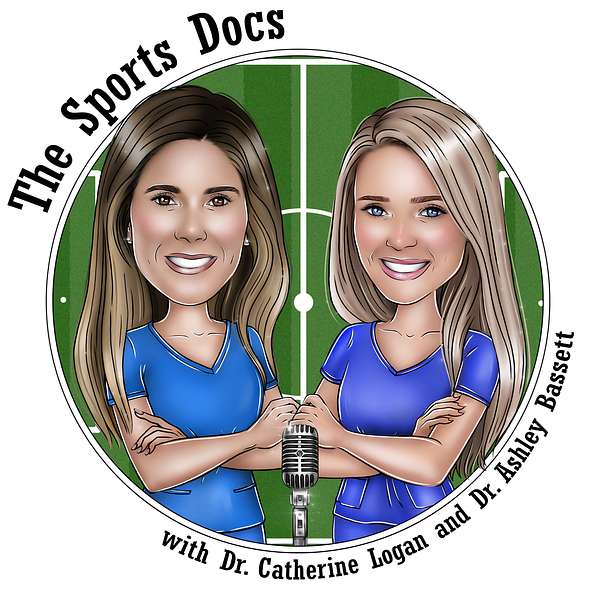
The Sports Docs Podcast
Sports medicine is a constantly evolving field, with hundreds of new articles published each month on the topic. This ever-growing wealth of information can make it challenging to stay updated on the newest approaches and techniques, and to know which data should actually change your practice. Join orthopedic surgeons, Dr. Catherine Logan and Dr. Ashley Bassett, as they chat about the most recent developments in sports medicine and dissect through all the noise.
On each episode of The Sports Docs podcast, the hosts will tackle a specific injury – from ACL tears to shoulder instability – and review the top research from various high-impact journals that month, including The American Journal of Sports Medicine, Arthroscopy: The Journal of Arthroscopic and Related Surgery, Sports Health, Journal of Shoulder and Elbow Surgeons, and more. The Sports Docs will also be joined by experts in the field of sports medicine – orthopedic surgeons, nonoperative sports medicine specialists, athletes, physical therapists, athletic trainers and others – to provide a fresh and well-rounded perspective based on their unique experiences.
The Sports Docs – Dr. Logan & Dr. Bassett – are friends & former co-residents from the Harvard Combined Orthopaedic Residency Program, who went onto esteemed sports medicine fellowships at The Steadman Clinic and The Rothman Institute, respectively. Dr. Logan practices in Denver, CO, and serves as Team Physician for Men's USA Lacrosse & as a Team Physician for U.S. Ski & Snowboard. Dr. Bassett is the director of the Women’s Sports Medicine Center at the Orthopedic Institute of New Jersey and practices across northern NJ, primarily in Morris and Sussex Counties.
Together, they will bring monthly conversations on how to care for athletes of all ages and levels of play, with a healthy mix of cutting-edge science and real-world application.
The Sports Docs Podcast
13. Introducing OVERTIME: Lateral Extra-articular Tenodesis (LET)
Welcome to Overtime with the Sports Docs. On each of these mini episodes, Catherine and Ashley chat about a new topic or surgical technique in the field of sports medicine. We’ll give you our quick take on the indications, various surgical approaches and overview of the outcomes. We’re excited to bring this new styles to our listeners and would love to hear your feedback about it!
On this Overtime episode, we’re going to chat about extra articular augmentation of ACL reconstruction, specifically focusing on lateral extra articular tenodesis. The need for this procedure arose due to the concern that even our best “anatomic” ACL reconstructions often fail restore rotational control, resulting in a persistently positive pivot shift test, which has been strongly associated with worse clinical outcomes, increased functional instability, possibly even increased arthritic changes.
Enjoy these brief, research updates in a casual discussion setting!
The history of Lateral Extraarticular Tenodesis (LET)
- In the 1960s ACL reconstructions were limited to open techniques as this was before key hole surgery (arthroscopy) and they involved rerouting the patella tendon to provide stability
- However, this resulted in such poor outcomes that alternative techniques were sought
- In 1967 Dr Marcel Lemaire was the first to describe an isolated LET to help reduce rotational instability
- This involved an 18 x 1cm wide strip of iliotibial band and rerouting it around the outside part of the knee
- With the advent of arthroscopic ACL reconstruction techniques, the benefit of smaller scars and less pain, LET was thought to be unnecessary
- Increasing medical evidence though has shown that whilst isolated ACL reconstruction may be adequate for lower demand athletes, new modified LET procedures help to significantly improve rotational stability to an arthroscopic ACL reconstruction